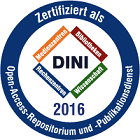Phytochemical combinations of lichen Evernia prunastri (L.) Ach. reduce drug resistance to temozolomide but not to paclitaxelin vitro

Phytochemical combinations of lichen Evernia prunastri (L.) Ach. reduce drug resistance to temozolomide but not to paclitaxelin vitro

| dc.contributor.author | Shcherbakova, A. | |
| dc.contributor.author | Nguyen, L. | |
| dc.contributor.author | Koptina, A. | |
| dc.contributor.author | Backlund, A. | |
| dc.contributor.author | Banerjee, S. | |
| dc.contributor.author | Romanov, E. | |
| dc.contributor.author | Ulrich-Merzenich, G. | |
| dc.date.accessioned | 2025-11-13T11:41:55Z | |
| dc.date.available | 2025-11-13T11:41:55Z | |
| dc.date.issued | 15.09.2025 | |
| dc.identifier.uri | https://hdl.handle.net/20.500.11811/13682 | |
| dc.description.abstract | Introduction: Temozolomide (TMZ) and Paclitaxel (PXT), crucial anti-cancer drugs for glioblastoma (GBM) and primary breast cancer (BC), respectively, face drug resistance. Therefore, we investigated the adjuvant potential of characterized extracts of the lichens Evernia prunastri (L.) Ach. (Epr), Cladonia arbuscula (Wallr.) Flot (Car) and their metabolites, evernic acid (EA) and usnic acid (UA) alone or in combination with TMZ and PTX for their immunomodulatory and chemosensitivity increasing potential. Methods: TMZ-resistant U-87 cells, MCF7 BC-cells, and normal human skin fibroblasts (HSKF) were treated with hexane (Hex), dichloromethane (DCM), and acetonitrile (ACN) extracts of Epr (EprDCM, EprACN), Car (CarHex, CarACN), and with EA and UA to measure cell metabolic activity. Molecular mechanisms were predicted using ChemGPS-NP and validated by Western blot, RNA sequencing, quantitative RT-PCR, and Wnt inhibitory factor 1 (WIF1) protein expression. Combinatory effects were calculated by Combination Index (CI) and Zero Interaction Potency methods (ZIP). Results: Extracts and selected metabolites reduced concentration-dependent cellular metabolic activity in U-87 and MCF7 cells. EprACN and EA (U-87 cells: IC50 30 μg/mL), safe to HSKF, regulated key proteins in MAP kinases pathways, supporting predictions made by ChemGPS-NP. The combination EA-TMZ showed additive effects (TMZ-reduction: 3.4 fold), reduced transcription of Wnt pathway members, and increased in U-87 cells protein releases of WiF1, the central inhibitor of Wnt-signaling. Further gene expression data (GE) suggest involvement of IL-17 receptor and BDNF. Discussion: The combination EA-TMZ interacts with the Wnt pathway regulation associated with sensitizing U-87 cells, without increasing GEs of pro-inflammatory cytokines. EA deserves further investigation as an adjuvant. | en |
| dc.format.extent | 16 | |
| dc.language.iso | eng | |
| dc.rights | Namensnennung 4.0 International | |
| dc.rights.uri | http://creativecommons.org/licenses/by/4.0/ | |
| dc.subject | lichens | |
| dc.subject | glioblastoma | |
| dc.subject | synergy | |
| dc.subject | Wnt signaling | |
| dc.subject | prediction | |
| dc.subject | resistance | |
| dc.subject.ddc | 610 Medizin, Gesundheit | |
| dc.title | Phytochemical combinations of lichen Evernia prunastri (L.) Ach. reduce drug resistance to temozolomide but not to paclitaxelin vitro | |
| dc.type | Wissenschaftlicher Artikel | |
| dc.publisher.name | Frontiers Media | |
| dc.publisher.location | Lausanne | |
| dc.rights.accessRights | openAccess | |
| dcterms.bibliographicCitation.volume | 2025, vol. 16 | |
| dcterms.bibliographicCitation.issue | 1633978 | |
| dcterms.bibliographicCitation.pagestart | 1 | |
| dcterms.bibliographicCitation.pageend | 16 | |
| dc.relation.doi | https://doi.org/10.3389/fphar.2025.1633978 | |
| dcterms.bibliographicCitation.journaltitle | Frontiers in Pharmacology | |
| ulbbn.pubtype | Zweitveröffentlichung | |
| dc.version | publishedVersion | |
| ulbbn.sponsorship.oaUnifund | OA-Förderung Universität Bonn |
Dateien zu dieser Ressource
Das Dokument erscheint in:
-
Publikationen (4)




